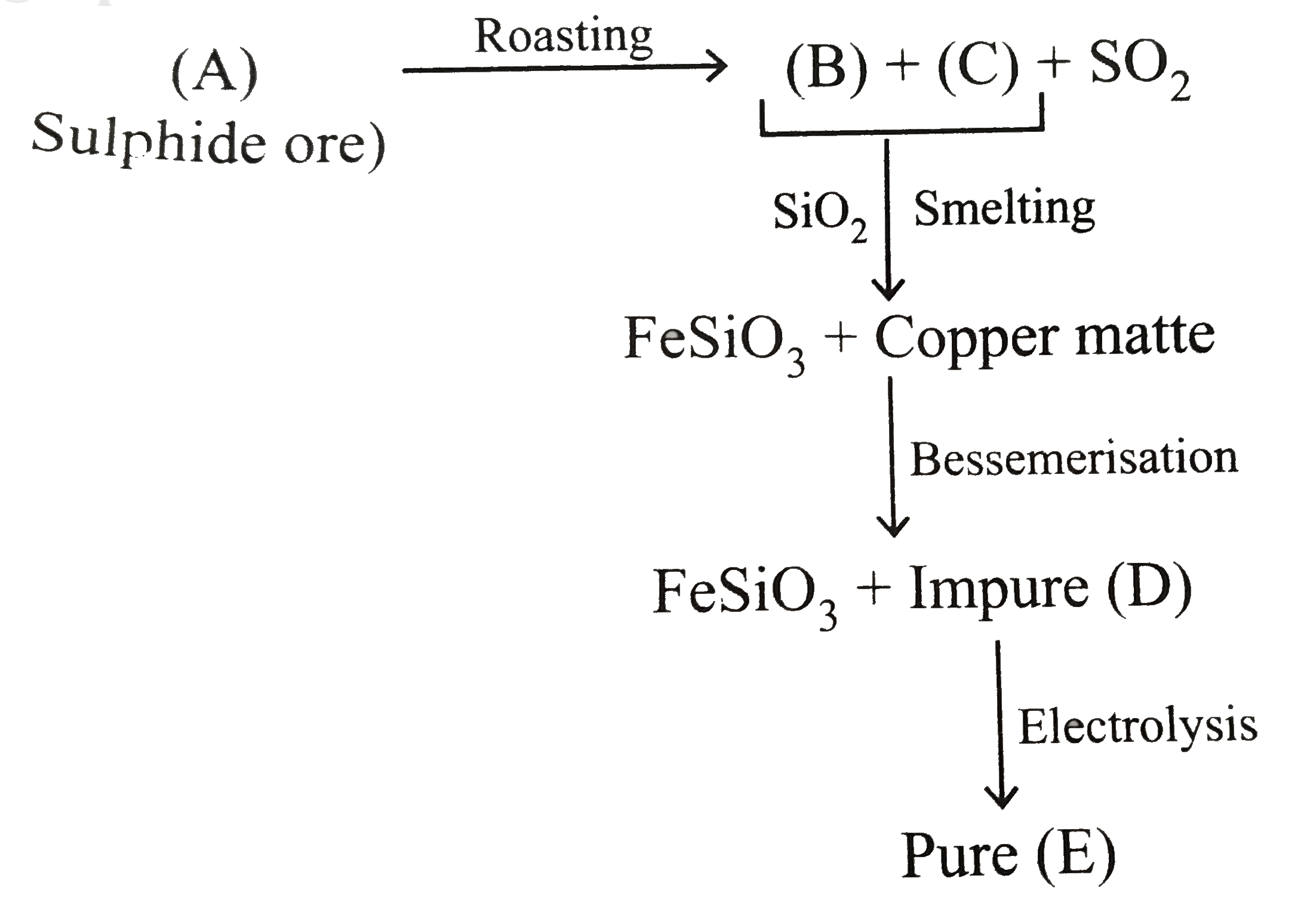Copper matte is charged into a silica lined converter in extraction of copper. What is the role of silica lining here?
To answer the question regarding the role of silica lining in the converter during the extraction of copper from copper matte, we can break down the explanation into several steps:
1. Understanding Copper Matte:
- Copper matte is primarily a mixture of copper sulfide (Cu₂S) and iron sulfide (FeS).
2. Role of the Converter:
- The converter is used in the extraction process to convert copper sulfide into copper metal.
3. Heating Process:
- When copper matte is charged into the silica-lined converter and heated, a process known as smelting occurs.
4. Formation of Copper Oxide:
- During the heating, copper sulfide (Cu₂S) is oxidized to form copper oxide (Cu₂O).
5. Iron Oxide Formation:
- Simultaneously, the iron sulfide (FeS) present in the copper matte is also oxidized to form iron oxide (FeO).
6. Role of Silica (SiO₂):
- The silica lining in the converter reacts with the iron oxide (FeO) produced during the process.
7. Formation of Slag:
- The reaction between iron oxide and silica forms a molten slag, which is primarily composed of iron silicate (FeSiO₃).
8. Removal of Slag:
- The slag is less dense than the molten copper and can be easily removed from the top of the converter. This separation is crucial as it helps in purifying the copper by removing impurities.
9. Conclusion:
- Therefore, the role of the silica lining in the converter is to facilitate the formation of slag from iron oxide, allowing for the efficient removal of impurities during the extraction of copper.
Summary:
The silica lining in the converter serves to react with iron oxide to form slag, which can be easily removed, thus enhancing the purity of the extracted copper.
---
- Copper matte is primarily a mixture of copper sulfide (Cu₂S) and iron sulfide (FeS).
- The converter is used in the extraction process to convert copper sulfide into copper metal.
- When copper matte is charged into the silica-lined converter and heated, a process known as smelting occurs.
- During the heating, copper sulfide (Cu₂S) is oxidized to form copper oxide (Cu₂O).
- Simultaneously, the iron sulfide (FeS) present in the copper matte is also oxidized to form iron oxide (FeO).
- The silica lining in the converter reacts with the iron oxide (FeO) produced during the process.
- The reaction between iron oxide and silica forms a molten slag, which is primarily composed of iron silicate (FeSiO₃).
- The slag is less dense than the molten copper and can be easily removed from the top of the converter. This separation is crucial as it helps in purifying the copper by removing impurities.
- Therefore, the role of the silica lining in the converter is to facilitate the formation of slag from iron oxide, allowing for the efficient removal of impurities during the extraction of copper.
The silica lining in the converter serves to react with iron oxide to form slag, which can be easily removed, thus enhancing the purity of the extracted copper.
Topper's Solved these Questions
- BOOK - ICSECHAPTER - GENERAL PRINCIPLES AND PROCESSES OF ISOLATION OF ELEMENTS EXERCISE - EXERCISE (PART-II ( DESCRIPTIVE QUESTIONS )) (SHORT ANSWER QUESTIONS)205videos
GENERAL PRINCIPLES AND PROCESSES OF ISOLATION OF ELEMENTS
- BOOK - ICSECHAPTER - GENERAL PRINCIPLES AND PROCESSES OF ISOLATION OF ELEMENTS EXERCISE - EXERCISE (PART-II ( DESCRIPTIVE QUESTIONS )) (LONG ANSWER QUESTIONS)53videos
GENERAL PRINCIPLES AND PROCESSES OF ISOLATION OF ELEMENTS
- BOOK - ICSECHAPTER - GENERAL PRINCIPLES AND PROCESSES OF ISOLATION OF ELEMENTS EXERCISE - EXERCISE (PART-I ( OBJECTIVE QUESTIONS )) (MATCH THE FOLLOWING)6videos
GENERAL PRINCIPLES AND PROCESSES OF ISOLATION OF ELEMENTS
- BOOK - ICSECHAPTER - ELECTROCHEMISTRYEXERCISE - ISC EXAMINATION QUESTIONS (PART-II Numerical Problems)19videos
ELECTROCHEMISTRY
- BOOK - ICSECHAPTER - HALOALKANES AND HALOARENES EXERCISE - SOURCE9videos
HALOALKANES AND HALOARENES
Similar Questions
Why copper matte is put in silica lined converter?
View SolutionCopper matte contains
View SolutionWhat is the role of catalytic converter ?
View SolutionWhat is the role of silica in the setting of cement?
View Solution
Composition of copper matte is.
(a)Cu2S + FeS (small amount)
(b) Cu2S + FeS (small amount)
(c) Cu2 + FeSO4 (small amount)
(d) Cu2S + FeO (small amount)View SolutionWhy is chalcocite roasted and not calcined during extraction of copper ?
View SolutionWhat is the role of silica in the metallurgy of copper.
View SolutionCopper matte consists of:-
View SolutionWhat is the function of copper-T ?
View Solution…………………… are content of matte during extraction of copper.
View Solution

